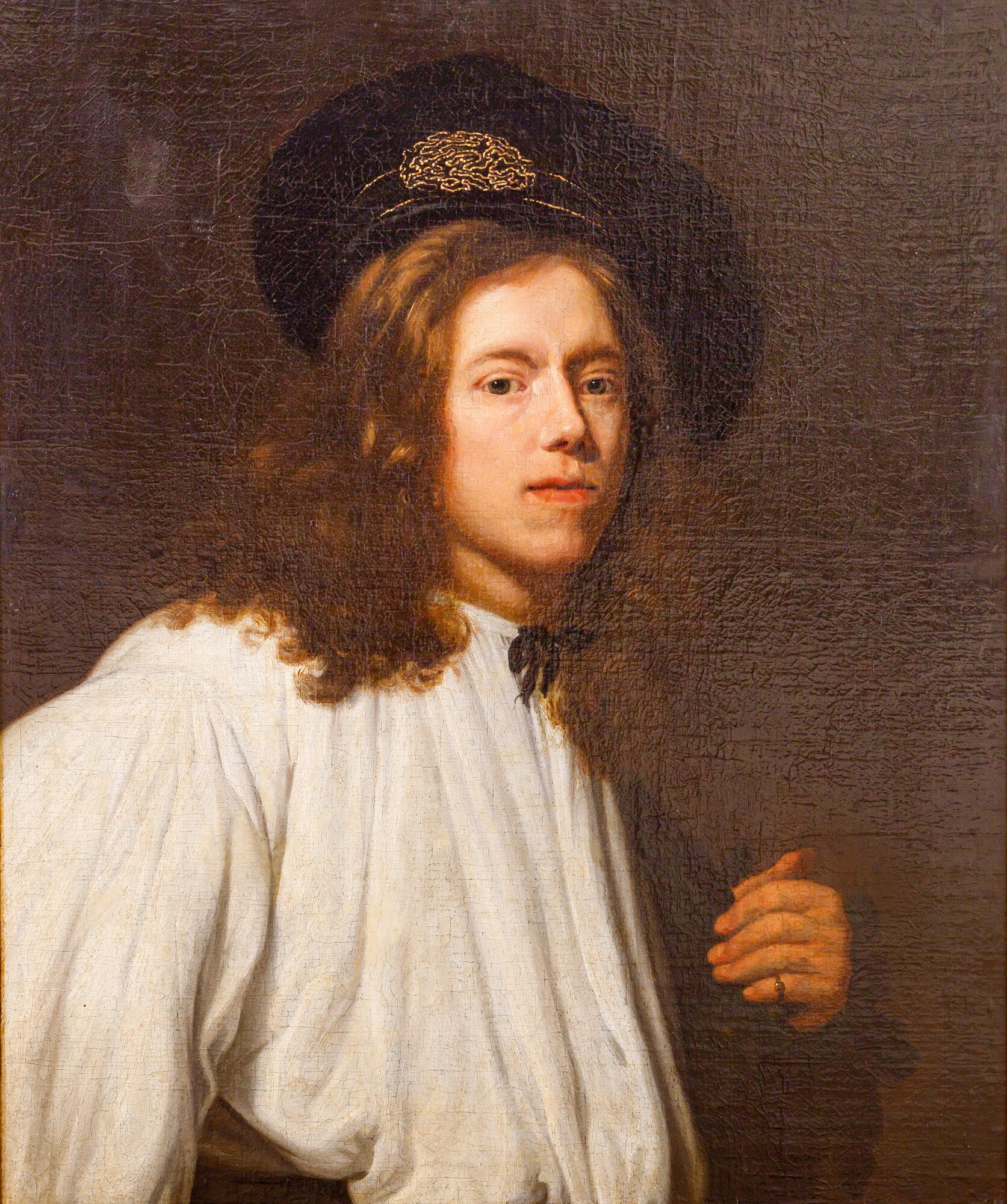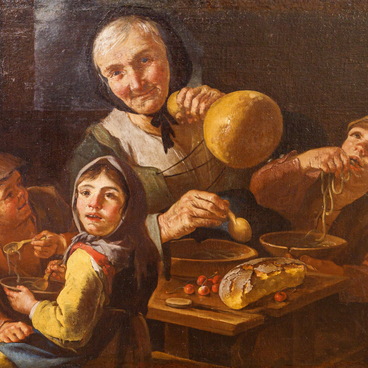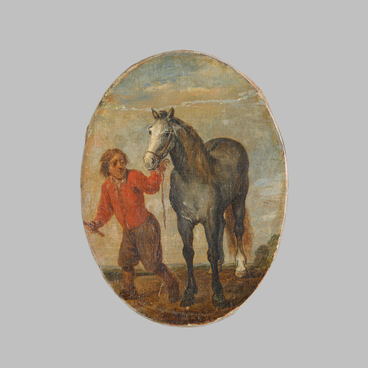The self-portrait of Samuel Dirksz van Hoogstraten gives the idea of what the talented Dutch painter, writer, and art theoretician looked like. He worked in a wide range of genres including portraits, landscapes, genre scenes, historical painting, animal painting, still lifes, and even optical illusions.
Samuel was the eldest of seven children. He was taught the basics of drawing by his father — Dirck van Hoogstraten. After his father’s death, the 14-year-old Samuel moved to Amsterdam and became a student of Rembrandt. He created this self-portrait during his formative years, and the painting resembles Rembrandt’s style. Following the example of his teacher, Samuel van Hoogstraten studied his own appearance as a subject for his art from a young age. He tried to grasp the changes in his appearance, mood, and countenance. The artist spent hours in front of the mirror to practice reproducing the facial expressions and the changing effects of light and shadow.
At Rembrandt’s studio, Samuel van Hoogstraten met Carel Fabritius, the future founder of the Delft School, and teacher of Johannes Vermeer. The young painters were fascinated with perspective and optical illusions. Together, they studied the latest inventions, including the telescope and camera obscura. Later, Samuel van Hoogstraten became famous at the Habsburg court in Vienna as a master of optical illusions and trompe-l'œil still lifes. He was particularly admired for his famous “perspective box” that showed the interior of an entire Dutch house when viewed through a special peephole.
Samuel van Hoogstraten not simply imitated Rembrandt’s style but also enriched it with his own ideas and experience. The artist devoted a lot of time to studying art theory and in 1678 published the book “Introduction to the Academy of Painting” which is a valuable source of Rembrandt’s quotes, thoughts, and details of artistic methods.
The artist’s most famous and outstanding paintings include “Man at a Window”, or “Old Man Looking Through a Window” which can be mistaken for a photograph with its intricate realistic detail, and “View of a Corridor” which uses perfect perspective to create an illusion of depth.
Samuel was the eldest of seven children. He was taught the basics of drawing by his father — Dirck van Hoogstraten. After his father’s death, the 14-year-old Samuel moved to Amsterdam and became a student of Rembrandt. He created this self-portrait during his formative years, and the painting resembles Rembrandt’s style. Following the example of his teacher, Samuel van Hoogstraten studied his own appearance as a subject for his art from a young age. He tried to grasp the changes in his appearance, mood, and countenance. The artist spent hours in front of the mirror to practice reproducing the facial expressions and the changing effects of light and shadow.
At Rembrandt’s studio, Samuel van Hoogstraten met Carel Fabritius, the future founder of the Delft School, and teacher of Johannes Vermeer. The young painters were fascinated with perspective and optical illusions. Together, they studied the latest inventions, including the telescope and camera obscura. Later, Samuel van Hoogstraten became famous at the Habsburg court in Vienna as a master of optical illusions and trompe-l'œil still lifes. He was particularly admired for his famous “perspective box” that showed the interior of an entire Dutch house when viewed through a special peephole.
Samuel van Hoogstraten not simply imitated Rembrandt’s style but also enriched it with his own ideas and experience. The artist devoted a lot of time to studying art theory and in 1678 published the book “Introduction to the Academy of Painting” which is a valuable source of Rembrandt’s quotes, thoughts, and details of artistic methods.
The artist’s most famous and outstanding paintings include “Man at a Window”, or “Old Man Looking Through a Window” which can be mistaken for a photograph with its intricate realistic detail, and “View of a Corridor” which uses perfect perspective to create an illusion of depth.



